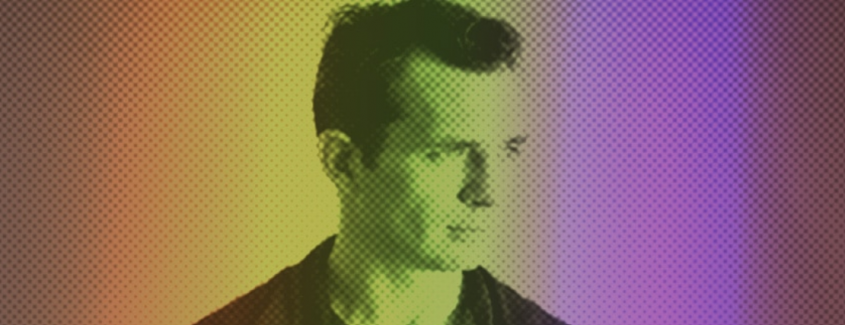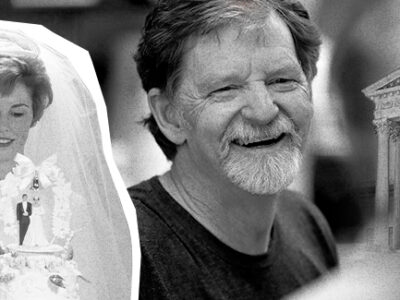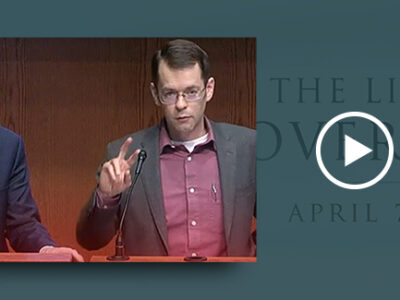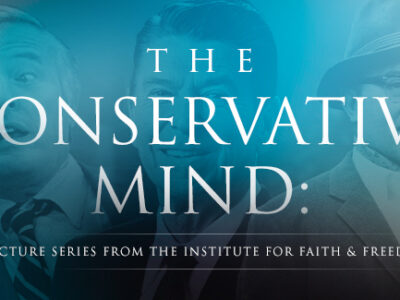
Editor’s note: This article first appeared at The American Spectator.
The year 2019 brought some notable golden anniversaries from a wild year: 1969. Some were glorious, such as the Moon Landing; others were scurrilous, scandalous, such as the Manson Family murders, Woodstock, Chappaquiddick. The year 1969 also marked some shocking deaths: Sharon Tate, Mary Jo Kopechne, even Judy Garland.
Another death that year, which rocked that generation, especially the so-called Beat Generation that emerged the previous decade, was that of Jack Kerouac, whose death at age 47 shocked Americans. And yet, in 2019, the 50th anniversary of Kerouac’s passing came and went. I didn’t see a single tribute. I thus felt it worthwhile to cobble together a tribute for The American Spectator, a publication that never neglected Kerouac’s importance, nor his enigma.
Jack Kerouac was a fascinating and often confusing character, a tragic one, in many ways remembered wrongly, or not quite rightly. His magnum opus was, of course, his 1957 classic, On the Road. My interest here, and perhaps of special interest to readers of this venerable publication, launched by R. Emmett Tyrrell Jr. when the Kerouac era was very much alive, was Kerouac’s unappreciated conservatism and faithful Catholicism. Countless admirers and emulators missed this aspect of the man, as have many of those who have written about him — with some exceptions.
In October 2018, Marlo Safi put together a beautifully written piece for National Review, titled, “The Conservative, Catholic Kerouac,” noting Keroauc’s pious roots as the altar-boy son of blue-collar, hardworking French-Canadian immigrants, who toward the end of his life retreated to the Marian prayers of his childhood. In September 2012, Robert Dean Lurie took a deeper look at that piety in a piece for the American Conservative called “The Conservative Kerouac.” Lurie detailed Kerouac the mystic, who “pined for God and home” and carried a special affinity for St. Francis of Assisi, St. Therese of Lisieux (“The Little Flower”), and Thomas Merton (another French immigrant, who became a Trappist monk and likewise famous writer, particularly via his brilliant memoir, The Seven Storey Mountain). Lurie highlighted an especially instructive moment from Kerouac’s final year. The Beat novelist was incensed when Ted Berrigan of the Paris Review asked him, “How come you never write about Jesus?” Kerouac snapped: “I’ve never written about Jesus?… You’re an insane phony…. All I write about is Jesus.”
That was precisely right. Though that underlying message was missed by millions of its acolytes, On the Road was really an autobiographical expression of Kerouac’s longing and searching for something — that something was God.
Historian Douglas Brinkley, the editor of Kerouac’s diary, reported that nearly every page carried a prayer, an appeal to Christ for mercy, or a sketched crucifix. “Kerouac was trying to make everything holy,” said Brinkley. “The very term beat, or for Beatitude of Christ, kind of came to Kerouac at a Catholic church. And when I edited his diaries, really almost every page, he drew a crucifix or a prayer to God, or asking Christ for forgiveness.”
Think about that: “Beat” referred to Christ’s Beatitudes. Many will be shocked to learn that, but it is true. Professor David A. King writes:
Kerouac had coined the term the Beat Generation, after hearing a friend use the expression Beat, meaning exhausted. But the Catholic Kerouac saw more in the word. As he recalled, during a visit to Lowell [his hometown] in 1954, he returned to the church of his youth, where he knelt alone in the silence. “And I suddenly realized, Beat means Beatitude! Beatific!” Later, he would go on to explain that “Because I am Beat, I believe in Beatitude and that God so loved the world He gave His only begotten son to it.”
Though Kerouac wrote many other books, he will be forever remembered for “On the Road,” which he described as “really a story about two Catholic buddies roaming the country in search of God. And we found Him.” This … probably surprises anyone who has read this episodic story of sordid love affairs, drugs, jazz, fast cars and madness…. For most of his life, Kerouac was sadly out of his mind — drunk, addled, and fatigued by work and fame. He often spoke without the benefit of foresight. Yet I think his Catholic instincts were deeply sincere. Friends often teased him about his Catholicism; though he did not practice the faith, he clearly thought about it all the time, and he frequently defended the Church to skeptics. Even in his deep inquiries into Buddhism and Eastern spirituality, an exploration he shared with his contemporary Merton, Kerouac saw mysticism from a Catholic perspective. It was ingrained in him. He proclaimed a devotion to both St. Joseph and especially St. Therese, whose “Little Way” intrigued him.
At the core of “On the Road,” and at the heart of all his work, is the Catholic and Beat insistence upon an underlying spirituality that inhabits all creation. Kerouac saw the world, and everything in it, as Holy.
That was Douglas Brinkley’s conclusion as well. He notes that On the Road was about a “spiritual quest.” It was a metaphor for Kerouac’s larger life. According to Brinkley, the first thing to understand about Kerouac is that he was an American Catholic writer.
Brinkley shared those insights in a 2007 interview with NPR regarding the golden anniversary of On the Road. The pieces by David King and Robert Dean Lurie and Marlo Safi are still more recent accounts that delved into Kerouac’s conservatism and Catholicism. And yet, it will not surprise readers here to know that The American Spectator was way out in front on this unappreciated side of Jack Kerouac, running at least three articles in the early 1970s and an artist’s rendering of Kerouac’s mug on the cover of the May-June 1970 issue.
It was the Spectator’s founder, R. Emmett Tyrrell, Jr., who was the force behind those pieces. Perhaps unappreciated by modern audiences, Tyrrell and Wlady Pleszczynski have long had more of a literary bent than maybe any two comparable editors running a magazine in the conservative movement. The original inspiration for the name change to The American Spectator from the original name, The Alternative: An American Spectator, was inspired by two literary heroes of Tyrrell, H.L. Mencken and his partner, George Jean Nathan, who founded the magazine The American Spectator decades earlier (it lasted only a few years).
Thus, Tyrrell’s interest in the novelist Jack Kerouac (they never personally met) was a natural outgrowth, and more so given that Tyrrell shared Kerouac’s conservatism and Catholicism.
The first piece on Kerouac that ran in The Alternative appeared in the February 1970 issue. Titled, “Jack Kerouac, RIP,” it was a tribute by John Coyne reprinted from National Review.
“Jack’s dead,” wrote Coyne somberly. “To those of us who did some of our growing up around Columbia [University] in the Fifties, he was the standard, the legend.” He had been a high school football hero in his native Lowell, Massachusetts, noted Coyne, so admired that “on a good boozy night Scott Fitzgerald just might have traded The Great Gatsby for Jack’s varsity letter.” A star running back, the working-class kid fielded scholarship offers from around the country before opting for the Ivy League Columbia University. He went to Columbia, where, unlike the likes of Whittaker Chambers and Thomas Merton and Mark Rudd and a long line of others who became not just leftists at Columbia but communists, Kerouac played football rather than tinker with such ideological nonsense. And though he didn’t get sucked into the radical left, he did suffer a devasting injury on a long punt return that finished his playing days. He was his own man, stopped not by police at the front of a protest march led by Marxists, but by a broken leg during a nice punt return.
As Coyne noted, Kerouac gave up football for wild times and to write nothing short of an epic of the era: “The wild jags, the fistfight with a professor, the trips with [Neal] Cassady. And in between, he sat down and wrote a bestseller in 21 days.” And what did that book really say? Coyne understood way back in 1970: “[Jack] was saying something we all ached to find our own way to say: we loved this country and we wanted to tell it so. And it is precisely this that comes through On the Road. A deep, profound love affair with America.”
As a sort of final exhibit of that, Coyne furnished a letter he received from Kerouac the day he died. “Dear Coyne,” Kerouac wrote, “This brochure reads like a complaint from Al Capone.” He was referring to a diatribe expressed in a certain pamphlet issued by the New Left. “He loathed them,” Coyne wrote of Kerouac’s take on this new brand of ’60s leftists. “They were punks who had their minds made up about the world before they knew anything, and they had expropriated the legend. But their claim was not legitimate. They hadn’t earned it, Jack believed, and they never would. For their hatreds were not his, and his love for America will forever lie far outside their experiences.”
Kerouac appreciated what America had allowed him to do — that is, the America of freedom, which meant free markets, property rights, individualism, all polar opposites of the socialist-collectivist state hailed by his New Left appropriators. In “After Me, The Deluge,” an article that Kerouac in 1969 had put together for syndication in newspapers, and which unwittingly became a last statement published after his unexpected death, he said that “if it hadn’t been for Western-style capitalism,” which enabled “free economic byplay, movement north, south, east, and west, haggling, pricing, and the political balance of power carved into the U.S. Constitution,” he “wouldn’t have been able or allowed to hitchhike half broke thru 47 states of this Union and see the scene with my own eyes, unmolested.”
Truer words were never spoken. Just as it boggles the mind to today observe Millennials stump for “democratic socialism” on laptops and iPhones at the corner Starbucks, Kerouac was amazed by the sight of ’60s communists vilifying the very system that allowed them the unprecedented freedoms they reveled in. It’s a surreal spectacle that never seems to hit those who pride themselves in their intellectual superiority.
What John Coyne reported in The Alternative in February 1970 was expanded upon in the January 1974 issue by Allen Crawford. That issue carried Mark Twain on the cover and featured a lead editorial by Tyrrell that marshaled Twain and Mencken against the latest antics of the ACLU. Crawford’s piece, titled, “A Last-Ditch Stand,” was a double book review of a long-awaited posthumous publication of Kerouac’s Visions of Cody and Ann Charters’ biography. These developments, Crawford observed, had hippies hopping off to bookstores to buy On the Road for the first time. He remained a “counterculture hero.”
And yet, noted Crawford, Kerouac lamented that he had been co-opted by a generation of leftists who never understood him and with whom he felt no kinship. Crawford stated emphatically: “Kerouac was, politically and … temperamentally, a conservative.” And he was decidedly and devoutly Catholic. “I’m not a Beatnik, I’m a Catholic,” said Kerouac memorably.
That Catholicism, like his conservatism, fueled his intense anti-communism. Kerouac blasted what he didn’t hesitate to call “the Communist conspiracy,” even blaming it in part for helping to introduce drugs into American culture to weaken the nation’s social fiber. Here, too, he stood apart from the New Left counterculture. “I’m pro-American, and the radical political involvements seem to tend elsewhere,” he said. America “gave my Canadian family a good break, more or less, and we see no reason to demean said country.”
Allen Crawford shared an anecdote from a party at Ken Kesey’s place in New York. There with Kerouac was his longtime friend the poet Allen Ginsberg, whose politics Jack bitterly denounced, particularly what Kerouac called Ginsberg’s “pro-Castro bulls–t,” not to mention more generally the “Castro-jacketed New Left.” When Ginsberg playfully draped an American flag over Jack’s shoulders at Kesey’s place, Kerouac responded in kind: “So I took it, and I folded it up the way you’re supposed to, and I put it back on the sofa … the flag is not a rag.”
Allen Crawford detailed two particularly revealing interviews that Kerouac gave in the last year or so of his life:
In 1968, he was interviewed by Bruce Cook, who was preparing his book, The Beat Generation. “Listen,” Kerouac said pointedly to Cook, “my politics haven’t changed. I’m solidly behind Bill Buckley, if you want to know. Nothing in my books can be seen as basically in disagreement with that. Everybody just assumed that I thought the way they wanted me to think. What bothered me a lot, though, was the way a certain cadre of leftists among the so-called beats took over my mantle and twisted my own thoughts to support their purposes.”
Kerouac lectured Cook: “Look, I don’t know if you thought much about this at all, or maybe you already made up your mind about me before you came here, but I want to make this clear. I mean here I am, a guy who was a railroad brakeman, and a cowboy and a football player — just a lot of things ordinary guys do. And I wasn’t trying to create any new consciousness or anything. We didn’t have a whole lot of abstract thoughts. I mean, we were just a bunch of guys out trying to get laid.”
And certainly, he was a guy who wasn’t a liberal.
A second interview flagged by Allen Crawford came a few months later, when Kerouac was interviewed at his Florida home shortly before he died by Esquire’s John McLintlock, who Kerouac ushered into a room strewn with Falstaff bottles and stacks of National Review. “If Kerouac had a hero,” wrote McLintlock, “it was William F. Buckley, Jr.”
One regrettable moment that combined both — Buckley and booze — was a sadly awful appearance by Kerouac on Buckley’s Firing Line show in 1968 discussing the Hippie phenomenon. Virtually unrecognizable and far from resembling his iconic image, Kerouac was drunk — speech slurring, eyeballs rolling back, sweating, overweight. Only 46 years old, and smashed, he looked at least 20 years older. It was an embarrassing performance, despite certain touching moments that emerged between Jack’s slurred lines, such as him telling Buckley and the audience (Russell Kirk-like) that he believed in “order, tenderness, and piety.” (Kerouac also told Buckley of his support for Republicans: “My father and my mother and my sister and I have always voted Republican. Always.”)
His appearance on Firing Line was revealing in many ways, particularly his unfortunate end. For those who knew Kerouac intimately, the Firing Line fiasco was not a surprise. Joyce Johnson, a fellow writer and girlfriend of Kerouac, says that in public situations, “he had to drink.” Such was his discomfort with his fame, particularly after the sensation of On the Road: “Women everywhere were offering themselves. He was a celebrity, which was very hard for him. In public situations, he had to drink.”
Jack was visibly wounded during the Firing Line broadcast, which came September 3, 1968. He died only a year later, violently hemorrhaging his liver from the alcoholism eating up his insides. He succumbed at age 47, as what one source described as an “alcoholic recluse.” It was a tragic end.
Jack Kerouac’s funeral Mass was held on an unseasonably cold day in Lowell, Massachusetts, on October 24, 1969, at St. Jean Baptiste Cathedral. His body lay in a black casket, his hands folded prayerfully with a Rosary wrapped between his fingers. The Rosary represented the faith he had pined for. The priest, Father Armand Morisette, linked Kerouac’s road to the Road to Emmaus, where one of the companions searching for Jesus said to the other, “Wasn’t it like a fire burning in us when He talked to us on the road?”
That was the road that Jack Kerouac had searched for. It burned within him until he found his final peace back at that church of his youth.




